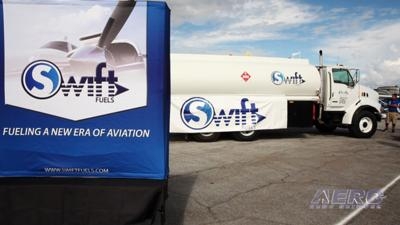Piston Aviation Fuels Initiative Testing Two Top Fuels By Shell And Swift
By Maria Morrison
As the EPA is being pressured from environmental groups to release findings on the harmful nature of leaded fuel, the Piston Aviation Fuels Initiative (PAFI) group is working hard to find a substitute once Tetra-Ethyl Lead is banned by the FAA.

Assuming that leaded fuel becomes unusable within the next few years, PAFI’s main goal is to “make the impact [of the fuel change] on the GA fleet as small as possible...and be ready to replace lead fuel when the ban comes,” says Doug Macnair, the Vice President of Government Relations for the EAA and a leading member of PAFI. Faced with this issue, PAFI was formed in 2014 to look for fuel substitutes. By that July, 17 new fuels were proposed to PAFI and underwent initial on-paper testing. They were tested by the PAFI Steering Group, which is comprised by members of AOPA, EAA, General Aviation Manufacturers Association (GAMA), National Air Transport Association (NATA), National Business Aviation Association (NBAA), and the FAA. By September, they narrowed the 17 down to the four that were accepted into Phase I of testing.
In Phase I, the fuels underwent a variety of tests to see how they would operate in different conditions. They were tested under a range of temperatures, flight phases, fuel systems, and storage spaces, as well as assessed for their environmental and cost impacts. The challenge they had to constantly overcome was the fact that these fuels were entirely different from what is known to pilots today. Macnair stated they had “absolutely nothing to do chemically with AvGas,” and compared them to beer and milk.

In March 2016, after two years of Phase I testing, PAFI had narrowed the selection down to two fuels, one from Shell the other from Swift. They are now undergoing Phase II testing, which involves the fuels being used in the air. PAFI is using a Cessna 150, Beechcraft Bonanza, Cirrus SR22 Turbo, North American Harvard, Piper Cherokee, Piper Malibu, and a Robinson R44, and testing each aircraft with a variety of engines from Lycoming, Continental, Rotax, and Pratt & Whitney. “The purpose of the aircraft used in PAFI [Phase II testing] was to be able to cover all the corners of the envelope so we can say the ones inside will be safe,” stated Macnair in a Forum at AirVenture. They selected the test aircraft to encompass the vast majority of airframe and engine combinations pilots could have because “no one will live long enough to test every engine in every airplane.”
During these Phase II tests, “We don't just fly circles in the sky. We’re out there looking for data.” This data includes how the newly-fueled engine performs in various stages of flight, including climbs for cooling, high-altitude cruise, and in-flight restarts. PAFI set themselves an “aggressive and ambitious timeline” to be finished and have found a suitable replacement fuel by December 2018. They project that, even if both fuels are found to be equal, the market will find a one-fuel solution, and that winning fuel will be the one that provides for fleet-wide authorization, being compatible with the most aircraft.
(Image from file)
 ANN's Daily Aero-Term (04.20.24): Light Gun
ANN's Daily Aero-Term (04.20.24): Light Gun Aero-News: Quote of the Day (04.20.24)
Aero-News: Quote of the Day (04.20.24) ANN's Daily Aero-Linx (04.21.24)
ANN's Daily Aero-Linx (04.21.24) Aero-News: Quote of the Day (04.21.24)
Aero-News: Quote of the Day (04.21.24) ANN's Daily Aero-Term (04.21.24): Aircraft Conflict
ANN's Daily Aero-Term (04.21.24): Aircraft Conflict




